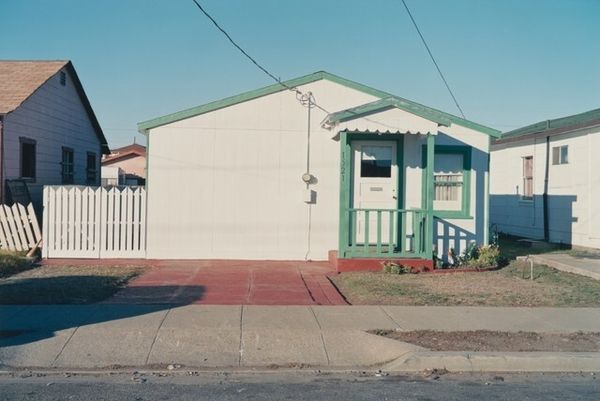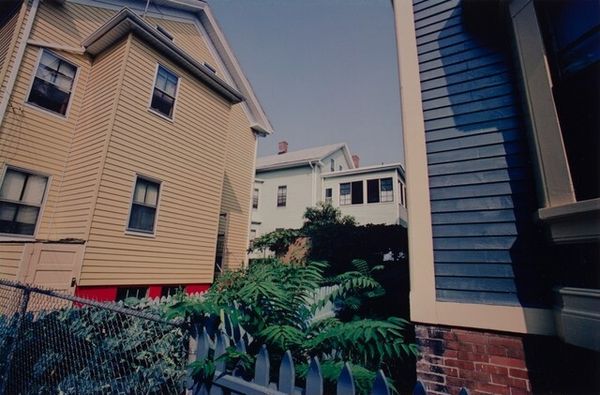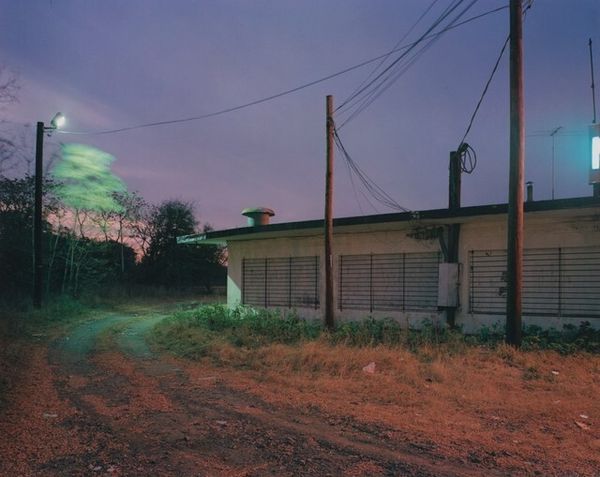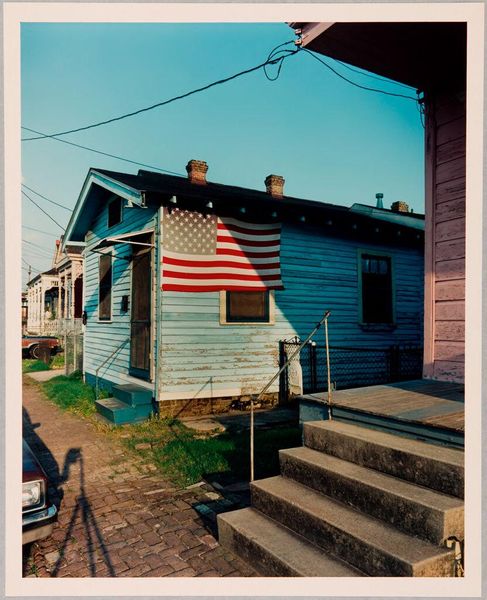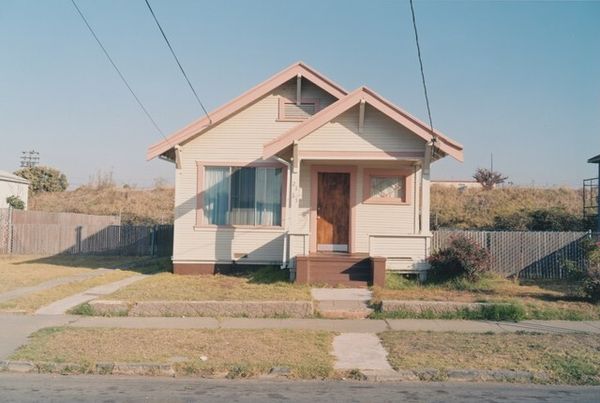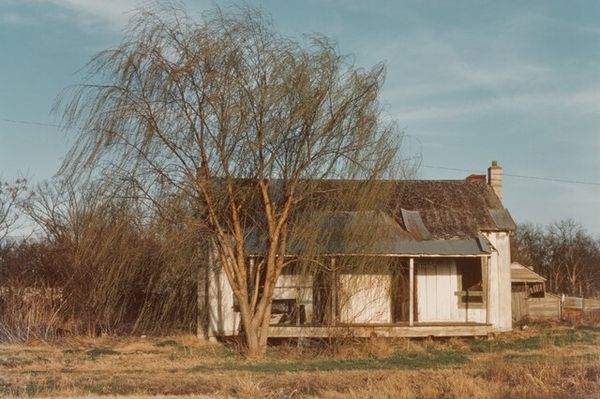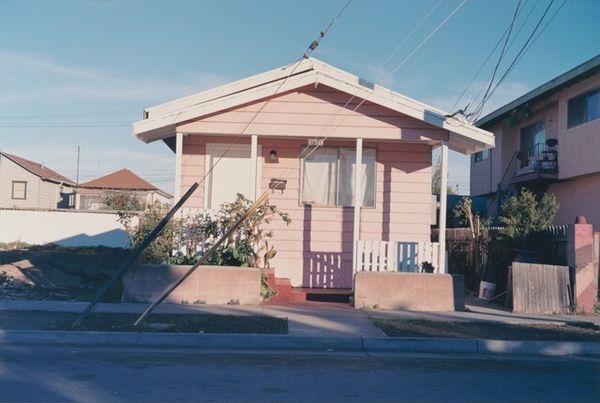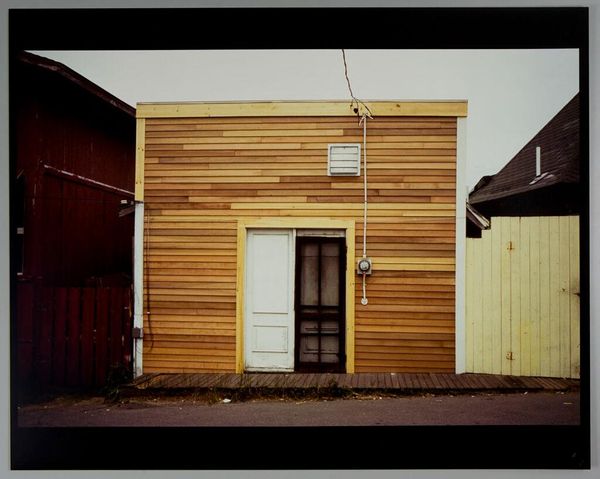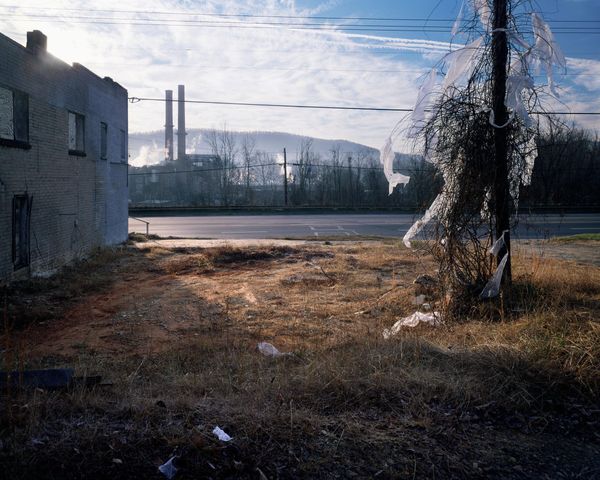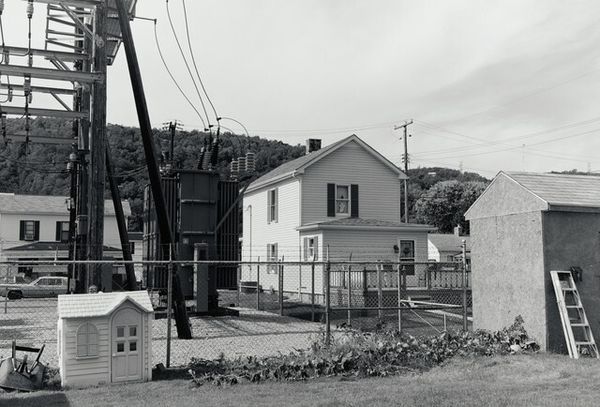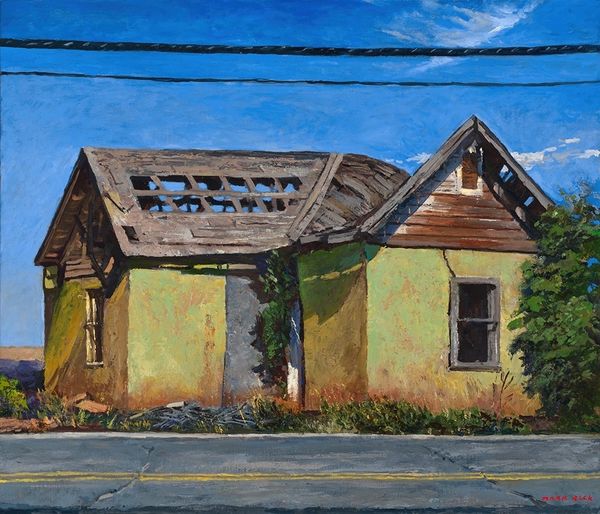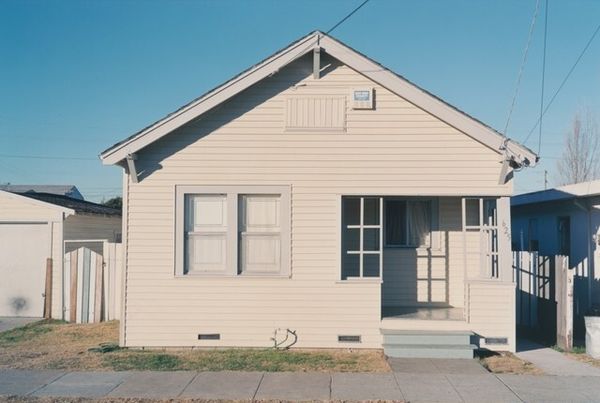
Dimensions: image: 447 x 559 mm
Copyright: © Stan Douglas, courtesy David Zwirner, New York | CC-BY-NC-ND 4.0 DEED, Photo: Tate
Curator: Stan Douglas's "Strathcona Alley and Stamps" presents a seemingly unremarkable view of an urban residential area. Editor: I see layers of habitation, almost palimpsestic. Neglect, reuse, and the promise of transformation are all interwoven. Curator: Douglas often focuses on sites charged with socio-political histories. Strathcona, one of Vancouver's oldest residential neighborhoods, has faced waves of development and displacement. Editor: That's interesting, because what I initially perceived as simple decay now reads as a potent symbol of resilience. The telephone poles become like markers of time, and the dilapidated fences almost resemble barriers, containing narratives of community. Curator: The image evokes a sense of ambiguity. It invites us to consider the complex interplay between urban development, community memory, and the politics of place. Editor: It is a reminder that even the most mundane settings can hold powerful stories, waiting to be unearthed and understood.
Comments
tate 6 months ago
⋮
http://www.tate.org.uk/art/artworks/douglas-strathcona-alley-and-stamps-p78420
Join the conversation
Join millions of artists and users on Artera today and experience the ultimate creative platform.
tate 6 months ago
⋮
This series of photographs was produced by Douglas to accompany the video installation Win, Place or Show (Tate T07700) and the triptych Untitled (Set for Win Place or Show: East View, West View, Overview) (Tate P78413). The series of photographs show the area of Vancouver known as Strathcona, where the video is set, although as it exists today rather than in 1968 when the action in the video purports to take place. This district forms the context for Douglas's video installation and is visible in the video installation as a rain-soaked cityscape that the characters view from their window in the apartment block. Paradoxically, at this moment the view is hardly distinguishable from any number of cityscapes. Stan Douglas was born in Vancouver in 1960 and this series of views of the city indicate his awareness of local contexts on which the impact of official histories and political programmes are evident. The redevelopment scheme for this district, first proposed in 1950, was partially completed during the following two decades. In 1968, however, further stages of the project were halted by the intervention of local residents and urban activists. The photographs reveal the completed parts of the redevelopment project, including the apartment buildings Stamps Place and McLean Park, as well as elements of the preserved old district such as the Russian Orthodox Church. Further Reading Lynne Cooke, Sianne Ngai, Nancy Shaw and Neville Wakefield, Double Vision: Stan Douglas and Douglas Gordon, exhibition catalogue, Dia Center for Art, New York 2000Diana Augaitis, George Wagner and William Wood, Stan Douglas, exhibition catalogue, Vancouver Art Gallery, Vancouver and Foundation for Contemporary Art, Tilburg 1999, reproduced pp. 95-97, 99-101 in colourCarol J Glover, Diana Thater and Scott Watson, Stan Douglas, London 1998 Tanya BarsonFebruary 2001
